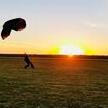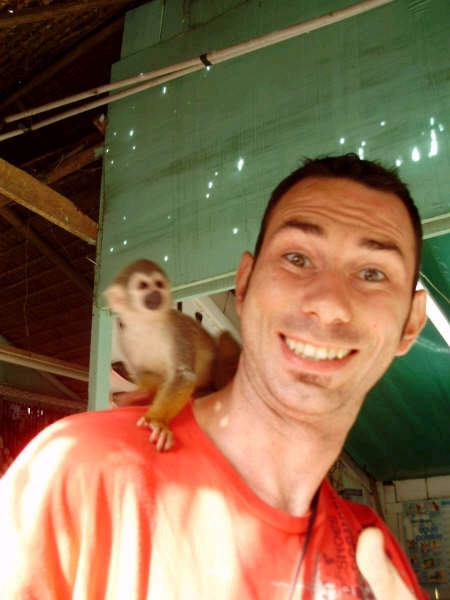-
Content
946 -
Joined
-
Last visited
-
Days Won
1 -
Feedback
0%
ufk22 last won the day on June 26 2019
ufk22 had the most liked content!
Community Reputation
32 NeutralGear
-
Main Canopy Size
150
-
AAD
Cypres 2
Jump Profile
-
Home DZ
Skydive Fargo
-
License
D
-
License Number
16168
-
Licensing Organization
uspa
-
Number of Jumps
2600
-
Tunnel Hours
10
-
Years in Sport
29
-
First Choice Discipline
Formation Skydiving
-
Second Choice Discipline
Freeflying
-
Freefall Photographer
No
Ratings and Rigging
-
Static Line
Instructor Examiner
-
AFF
Instructor
-
Formation
Coach
-
USPA Coach
Yes
-
Pro Rating
Yes
-
Wingsuit Instructor
No
Recent Profile Visitors
2,397 profile views
-
I too have hundreds of stiletto jumps. leave the nose open, just hanging, pay real close attention to squaring the slider and keeping it tight to the stops when you lay it down and fold it. Don’t look up, watch the horizon and keep your body square through deployment. That won’t be a side gust, you didn’t keep your hands symmetrical through the flare.
-
In my experience, depth perception was a lot more critical to old F111 canopies with the single stage flare. With zp, toggles down to level flight, holding till speed drops and then a hard final flare to finish requires much less depth perception.
-
So, rather have USPA just turn him in to the FAA? If this was 10 or more years ago, I might believe that maybe this was a personal thing between the TI and his RD, but not now. The new disciplinary procedures, combined with a preference for education over discipline by the safety and training committee, would lead me to bet on USPA being in the right on this one.
-
Hard reboot needed, small hole under the battery cover, push with a paper clip.
- 1 reply
-
- 1
-

-

Tension knots and stuck riser in reserve.
ufk22 replied to Bluejules8000's topic in General Skydiving Discussions
Question, was the main still in the container or if not, was it fully deployed or still in the d-bag? -

Cause of decline over time in annual fatalities per 100k jumps
ufk22 replied to JDBoston's topic in Safety and Training
1. The ISP. Find an old SIM (the blue loose leaf binder) and look at the student training section. Microscopic. 2. The IRM. Standardized training for instructors to teach a standardized training program (see ISP). 3. Equipment changes/improvements and their effects (audibles, Mars’s, AAD’s which also cause higher deployments, etc). 4. “Point Break”. This movie brought incredible number of new people into the sport, a lot of whom were professional/normal folk, eventually almost eliminating the “outlaw-no rules culture”. Most of the current “bad boy” skydivers are pretty tame compared to 20 years ago. If you don’t count the medical issues and the intentional low turns, neither of which was a factor 20-30 years ago, last years number drops in half, to 5. -

halfway down , halfway back in landing
ufk22 replied to kmzamani's topic in General Skydiving Discussions
This is really basic stuff that should be covered in any FJC. A simple method to avoid getting too low before picking an alternate landing area in case of a bad spot. Example; pattern entry is at 1000’ and every student should know approximately where the planned pattern entry point is. Under canopy at 4000’, look down and figure out your position, look at pattern entry point and pick a spot about 1/2 way between. 4000-1000=3000/2=1500’. So, at 2500’, if not at or well past the 1/2 point, pick out an alternate landing. -
“Reserves are really docile, and you weigh less after chopping.” And I thought I’d heard every bs line in the sport! Can we still say DGIT, or is that insensitive?
-
Depending on the student, either C or D.
-

Thinking of doing a Hybrid IAD/AFF Training Scenerio
ufk22 replied to tstar's topic in Safety and Training
OK, you don’t have a lot of money for skydiving. The best thing for you would be to drive a little longer so you can afford more,jumps. As a student, 2-3 jumps is a pretty big day. Any more and you will probably not learn much. The mental part. Staying current is a big part of learning, and if you can afford 3 jumps every weekend at an IAD DZ, but would have to limit jumps and weekends at an AFF DZ because of money, you will progress faster by jumping more at the IAD DZ. Both methods have their advantages, but what a DZ offers is usually about economics. It makes more sense for a Cessna DZ to do IAD/SL, and it makes more sense for a Turbine DZ to do AFF. By 50 jumps, skills will be the same. My home DZ only offers S/L for the FJC, then transition to AFF (or not) after the first jump. -
This is the essence of the PLF. Don’t take this as a personal shot at you, this is about me and a lot of us. I too thought that some things should be changed in training when I had a few hundred jumps and started working with students. It took another few hundred jumps and working with a bunch of students to figure out how much I really knew. This was before the ISP, when training was different at every different drop zone. You, like me back then, are not totally wrong. What you need to remember is that PLF’s are taught in the FJC. The whole purpose of the FJC, and even the entire student progression in the ISP, is not to teach the student to be a great skydiver. It is to give them a base to build on. The PLF is a relatively simple multi purpose technique. It is a basic method to minimize injury. I would no more expect this to be the only technique for someone with a couple hundred jumps to deal with a downwind landing than I would expect then to use a single stage flare. USPA has come a long way over the last 20 years with the ISP, both in it’s original form and what it has evolved into. There have been changes and there will be more. The current and former directors of Safety and Training have moved thing ever forward. The current Chair of the Safety and Training committee, along with the committee members are constantly modifying the program, making changes when they make sense, but not trying to reinvent what works. Bottom line, you’re right that there are a lot of variations on the PLF that, in certain circumstances work better than the exact version taught to students. But the basic PLF is what the student needs and should be taught. My concern is that in this age of modern parachutes it isn’t taught and practiced enough.
-
1st year in sport, wanted to talk to everybody about it and expected most would love it. 2nd-4th year in sport, loved to talk about it but realized most would never do it. 5th-30th year in the sport, change the subject when someone brings it up, having heard every wuffo skydiving story and joke way too many times.
-
While you can take the test online, it must be proctored by a USPA S&TA or I-E. This means in person.
-
This isn’t about a non-warm welcome, this is about you and your safety. You’ve got 30 some jumps, a 2 year layoff, and you were seriously injured on your last jump. My point is you should take the FJC, not just plan on some review and a jump. You yourself commented on how uneasy you felt about your canopy skills in your other post. Just my recommendation. As an C-E, a S/L I-E, and a AFF D-E.



